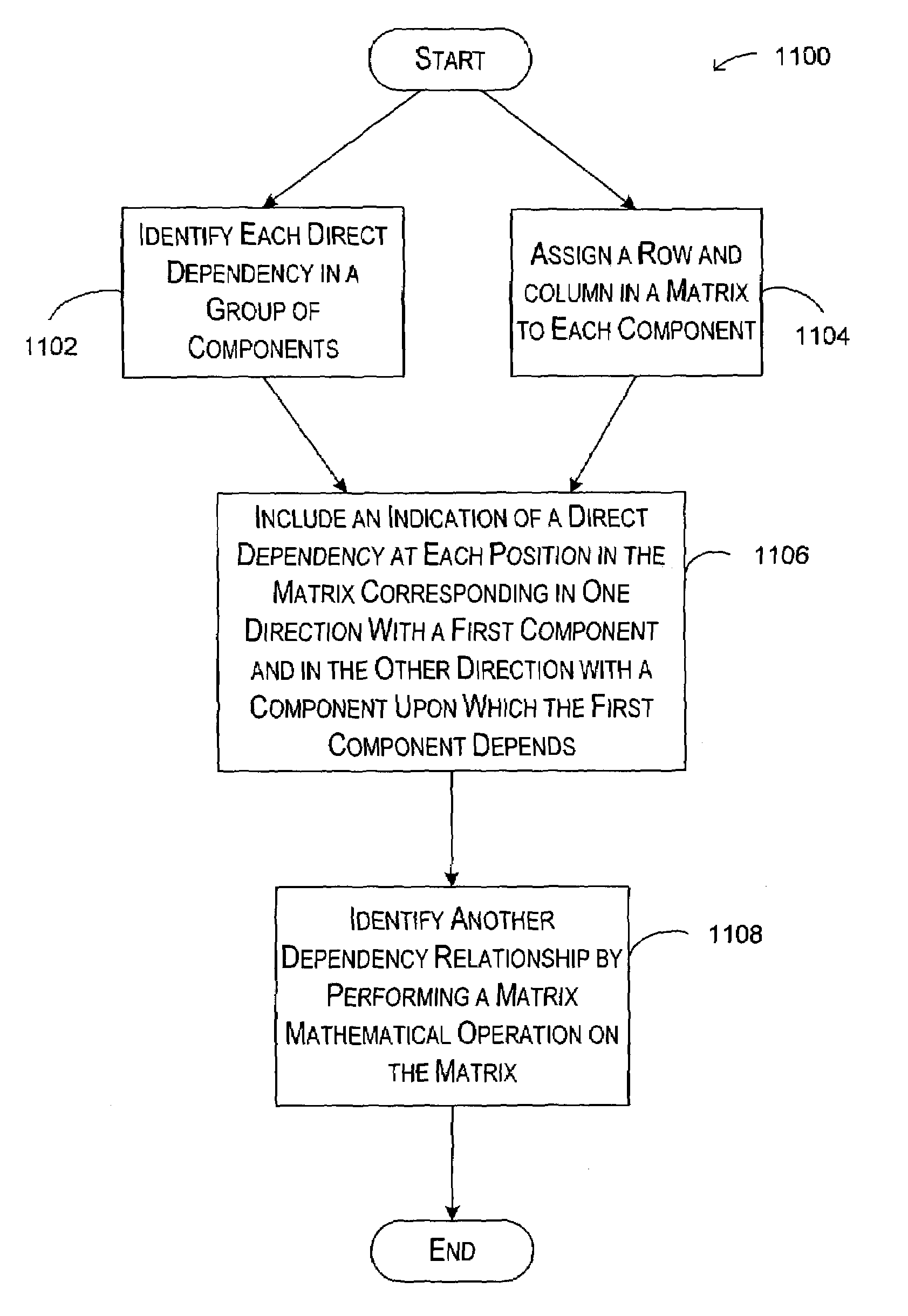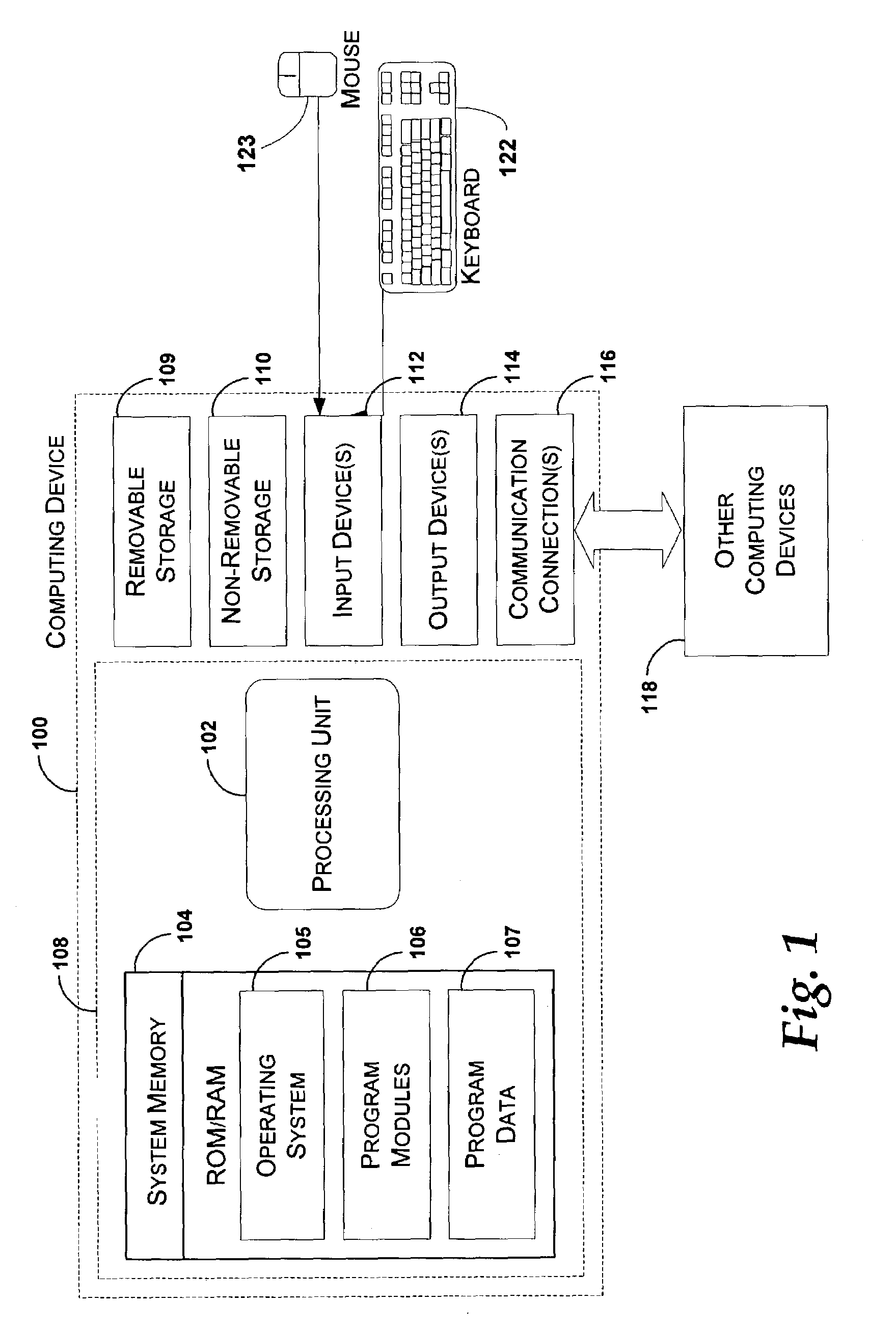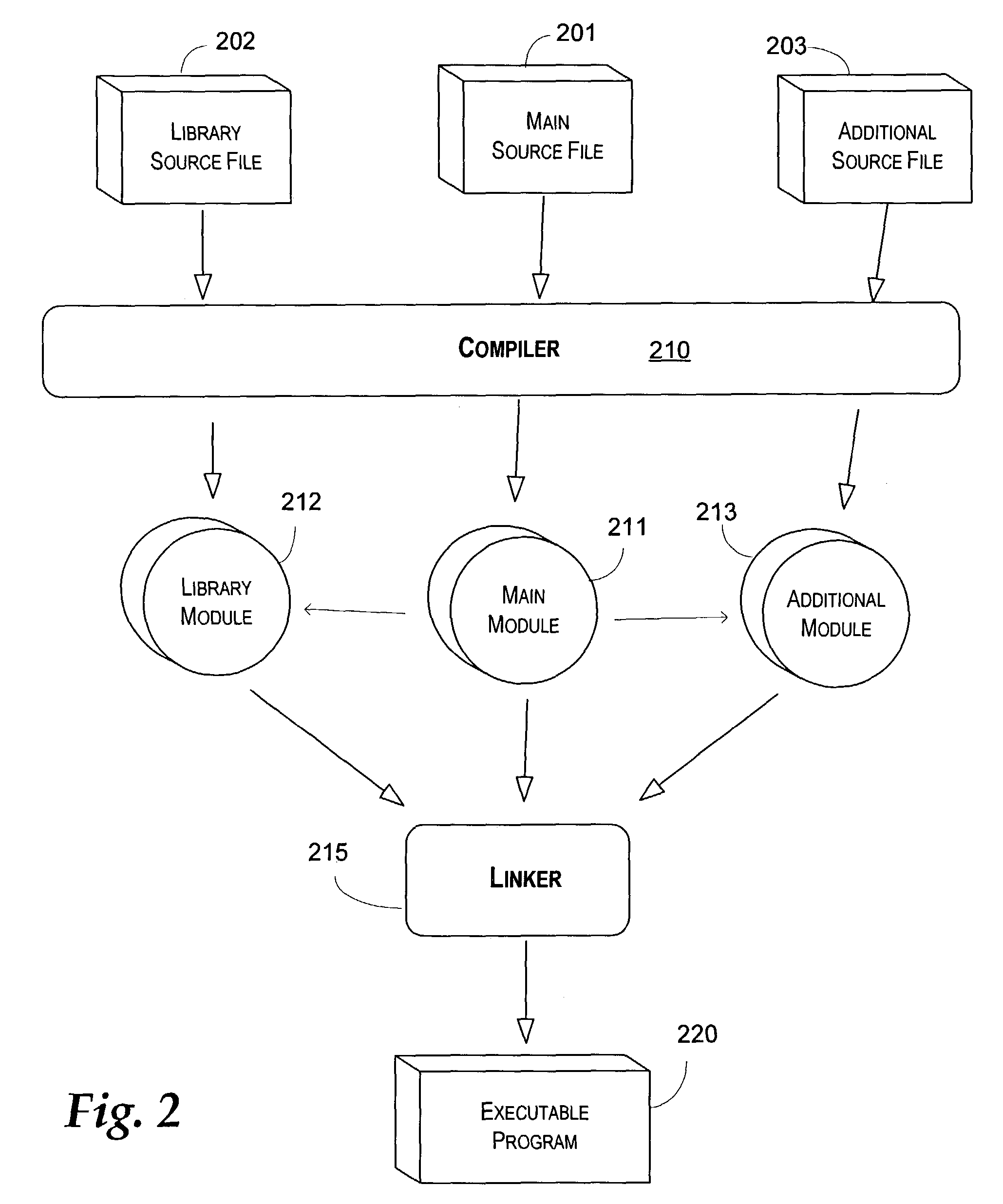Component dependency matrices
- Summary
- Abstract
- Description
- Claims
- Application Information
AI Technical Summary
Problems solved by technology
Method used
Image
Examples
Embodiment Construction
[0017]The invention provides a mechanism for identifying dependencies among software components through the use of a dependency matrix and matrix mathematics. Briefly stated, the invention involves identifying a first level of dependencies between each of a multiplicity of software components. A dependency matrix is created with each component being identified in each axis of the matrix. Thus, each component has a place in the X-axis of the matrix and a corresponding place in the Y-axis. This matrix is termed the “first order dependency” matrix.
[0018]The inventors have determined that each subsequent level of dependencies can then be computed through the application of traditional matrix mathematical principles. For instance, given the first order dependency matrix, the second order dependency matrix can be computed by simply multiplying the first order dependency matrix by itself. Higher order dependencies may be computed by multiplying the immediately prior dependency matrix by th...
PUM
 Login to View More
Login to View More Abstract
Description
Claims
Application Information
 Login to View More
Login to View More - R&D
- Intellectual Property
- Life Sciences
- Materials
- Tech Scout
- Unparalleled Data Quality
- Higher Quality Content
- 60% Fewer Hallucinations
Browse by: Latest US Patents, China's latest patents, Technical Efficacy Thesaurus, Application Domain, Technology Topic, Popular Technical Reports.
© 2025 PatSnap. All rights reserved.Legal|Privacy policy|Modern Slavery Act Transparency Statement|Sitemap|About US| Contact US: help@patsnap.com



